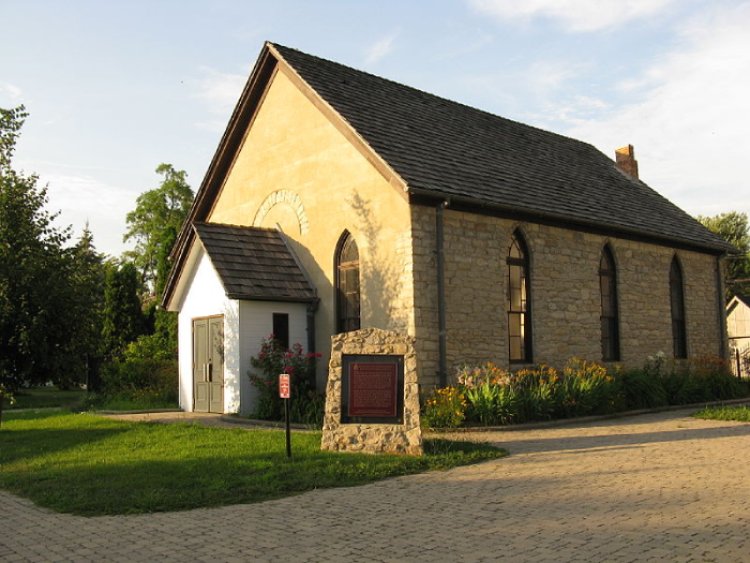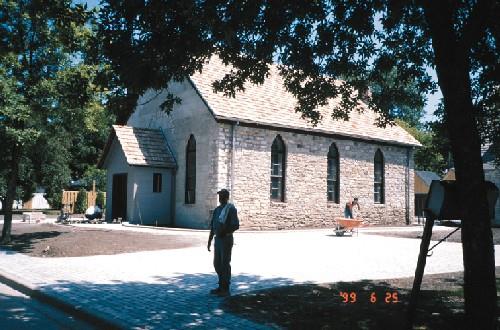Nazrey African Methodist Episcopal Church National Historic Site

© Yoho2001, Creative Commons
The Nazrey African Methodist Episcopal Church was designated a national historic site in 1999.
Commemorative plaque: 227 King Street, Amherstburg, OntarioFootnote 1
The Nazrey African Methodist Episcopal (AME) Church
In 1848, refugees from American slavery built this church by hand to serve Amherstburg's growing Black community. It is named for Bishop Nazery, who led many congregations, including this one, from the American-based AME Church Conference into the new Canadian-based British Methodist Episcopal Church. The denomination flourished until the late 19th century when many dwindling congregations consolidated and reunited with the AME Church. This evocative stone chapel speaks to the faith of the Underground Railroad refugees and to their commitment to build lives as free Canadians.
Description of historic place
Nazrey African Methodist Episcopal Church is a simple fieldstone chapel, now part of the North American Black Historical Museum complex in Amherstburg, Ontario. Remarkable as an expression of the determination of the Underground Railroad refugees who settled in this area, the church has been restored for special religious ceremonies and as part of the museum's mandate to present the history of the Black community. The designation refers to the building on its footprint.

© Parks Canada
Heritage value
Nazrey African Methodist Episcopal Church was designated a national historic site of Canada because: it is a remarkable vernacular stone chapel erected in 1848 descended from an early Methodist congregation established in 1826; it is the building type perhaps most representative of the Underground Railroad (UGRR) community and values, and stands out as a religious icon throughout the Black community; it is distinctive architecturally as an early and excellent example of the many small refugee churches found throughout Ontario; and it has an important association with Bishop Willis Nazery, the first leader of the British Methodist Episcopal Church, a denomination established by UGRR refugees, a wholly Canadian denomination expressive of their allegiance to their new homeland.
In 1848 refugees from American slavery built this church by hand to serve Amherstburg's growing Black community. Its simple auditory-hall form is typical of many of the churches established by the UGRR communities in Canada.
The church is named for Bishop Nazery, who led many congregations, including this one, from the American-based AME Church conference into the new Canadian-based British Methodist Episcopal Church. The denomination flourished until the late 20th century when many dwindling congregations consolidated and reunited with the AME Church. It is now managed as part of the North American Black Historical Museum.
Source: Historic Sites and Monuments Board of Canada, Minutes, Dec. 1998
The National Program of Historical Commemoration relies on the participation of Canadians in the identification of places, events and persons of national historic significance. Any member of the public can nominate a topic for consideration by the Historic Sites and Monuments Board of Canada.
- Date modified :